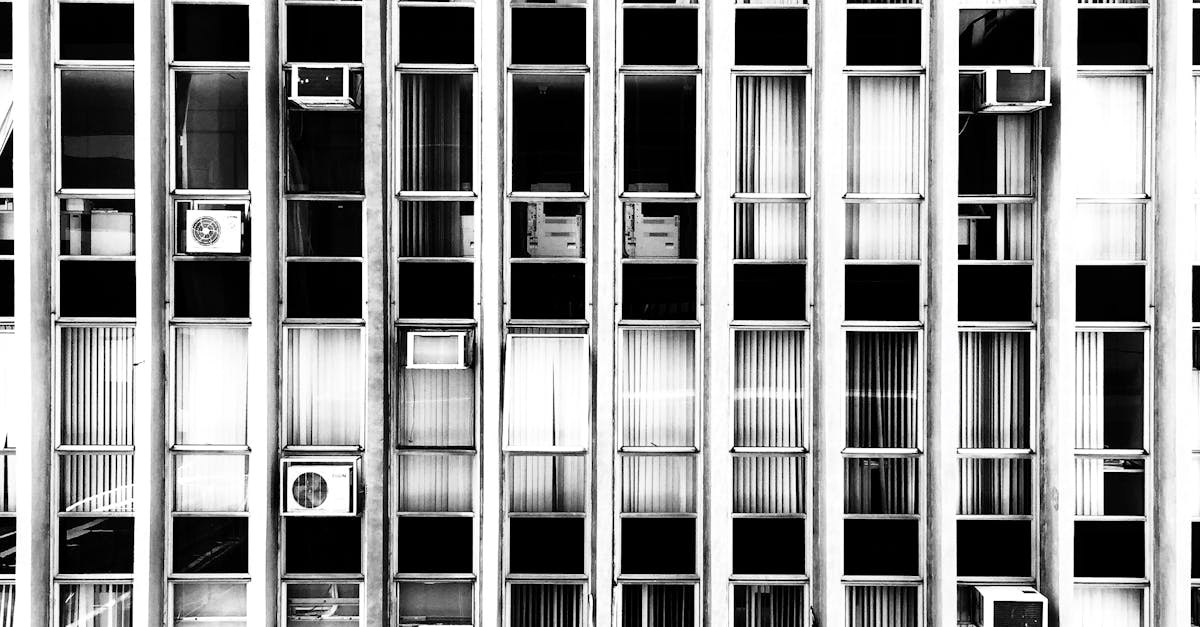
Noise considerations in commercial buildings
Additionally, considering the acoustics of the building during the design phase can help in choosing appropriate locations for the ducted air conditioning components. Utilising sound-absorbing materials in the construction of walls and ceilings near the system can further dampen noise transmission. This proactive approach not only enhances the comfort of building occupants but also contributes to creating a more conducive work environment.
Zoning options for ducted air conditioning systems
When considering zoning options for ducted air conditioning systems in commercial buildings, it is essential to prioritize efficiency and tailored comfort. Zoning allows for the division of a building into different areas, each with its own thermostat and control. This enables occupants to adjust the temperature based on their specific needs, leading to energy savings and enhanced comfort levels throughout the building.
By implementing zoning strategies, building managers can optimize the operation of the air conditioning system by directing airflow only to the areas that require heating or cooling at any given time. This targeted approach prevents energy wastage in unoccupied zones and ensures that each area maintains the desired temperature. Additionally, zoning can help reduce strain on the HVAC system, prolonging its lifespan and minimizing the need for costly repairs or replacements.
Enhancing control and efficiency with zoning strategies
Zoning strategies play a crucial role in enhancing the control and efficiency of ducted air conditioning systems in commercial buildings. By dividing the building into separate zones, each with its own thermostat and control, it is possible to tailor the cooling or heating output to specific areas based on occupancy and usage patterns. This targeted approach helps in preventing wastage of energy in unoccupied spaces and allows for a more efficient operation of the system overall.
Moreover, zoning strategies enable better control over the temperature settings in different areas of the building, providing occupants with the flexibility to adjust the climate according to their preference. This not only enhances occupant comfort but also contributes to energy savings by avoiding the need to cool or heat the entire building uniformly. By implementing zoning strategies effectively, building managers can achieve optimal control and efficiency of the ducted air conditioning system, leading to improved performance and cost-effectiveness in commercial settings.
Integration with building automation systems
Building automation systems are becoming increasingly popular in commercial settings to enhance efficiency and streamline operations. By integrating ducted air conditioning systems with these automation systems, building managers can enjoy greater control over the building's HVAC system. This integration allows for centralized monitoring and adjustments, leading to improved energy efficiency and cost savings.
Moreover, building automation systems can provide valuable data insights into the performance of the ducted air conditioning system. Through data analytics, building operators can identify patterns, optimize settings, and proactively address any maintenance issues. This proactive approach not only ensures a comfortable indoor environment for building occupants but also prolongs the lifespan of the HVAC system, reducing the risk of unexpected breakdowns.
Streamlining operations and monitoring with automation
Building automation systems play a crucial role in streamlining operations and monitoring within commercial buildings. By integrating ducted air conditioning systems with building automation technology, businesses can achieve greater efficiency and better control over their HVAC systems. Automation allows for real-time monitoring of temperature settings, energy usage, and system performance, enabling facility managers to make informed decisions and adjustments as needed.
Moreover, the integration of ducted air conditioning systems with building automation can lead to improved maintenance practices. Automation enables predictive maintenance, where the system can proactively identify potential issues before they escalate into costly repairs. This proactive approach not only minimises downtime but also extends the lifespan of the HVAC equipment, ultimately reducing maintenance costs in the long run.
FAQS
What factors should be considered when sizing a ducted air conditioning system for a commercial building?
When sizing a ducted air conditioning system for a commercial building, factors such as the size of the space, building orientation, insulation levels, occupant comfort requirements, and the heat load generated by equipment and occupants need to be taken into account.
How can noise disturbances from ducted air conditioning systems in commercial buildings be minimized?
Noise disturbances from ducted air conditioning systems in commercial buildings can be minimized by ensuring proper system placement, using sound-absorbing materials in ductwork, and selecting equipment with lower noise levels.
What are zoning options for ducted air conditioning systems in commercial buildings?
Zoning options for ducted air conditioning systems in commercial buildings allow for different areas of the building to be cooled or heated independently, enhancing control and efficiency. Zoning can be achieved through multiple thermostats, dampers, and smart controls.
How can zoning strategies enhance control and efficiency in ducted air conditioning systems for commercial buildings?
Zoning strategies enhance control and efficiency in ducted air conditioning systems for commercial buildings by allowing tailored temperature control in different zones based on occupancy patterns and comfort requirements, thereby reducing energy consumption.
How can ducted air conditioning systems in commercial buildings be integrated with building automation systems?
Ducted air conditioning systems in commercial buildings can be integrated with building automation systems to streamline operations and monitoring. This integration allows for centralized control, scheduling, and remote monitoring of the HVAC system, leading to improved energy efficiency and comfort.
Related Links
Assessing Ducted Air Conditioning Capacity for Climate and Location VariationsSizing Considerations for Zoning and Multi-Zone Ducted Air Conditioning Systems
Importance of Professional Assessment in Determining the Sizing and Capacity of Ducted Air Conditioning Systems
Impact of Ducted Air Conditioning Sizing on Energy Efficiency and Operating Costs
Matching Ducted Air Conditioning Capacity to Building Insulation and Efficiency
Calculating the Correct Size of Ducted Air Conditioning for Different Room Types
Evaluating the Cooling Load Requirements for Proper Sizing of Ducted Air Conditioning
Factors to Consider When Determining the Capacity of Ducted Air Conditioning Systems
Understanding the Importance of Correct Sizing for Ducted Air Conditioning